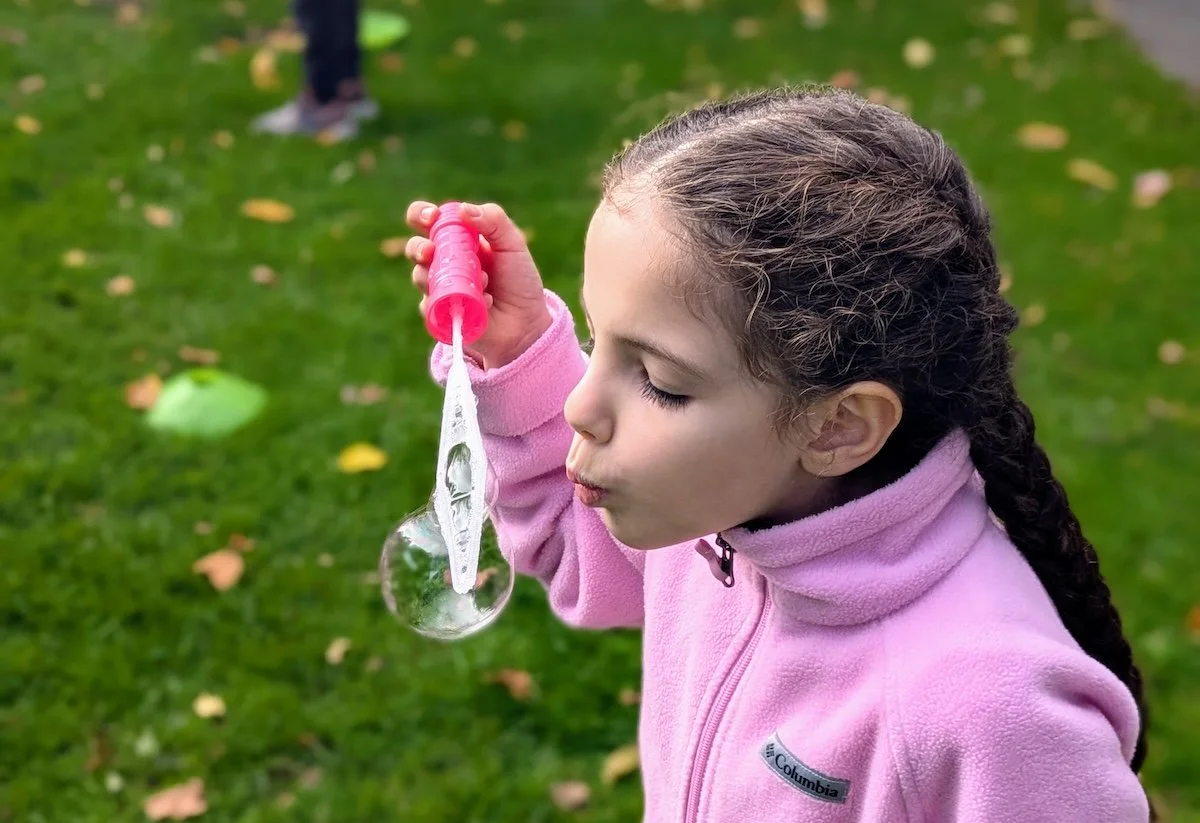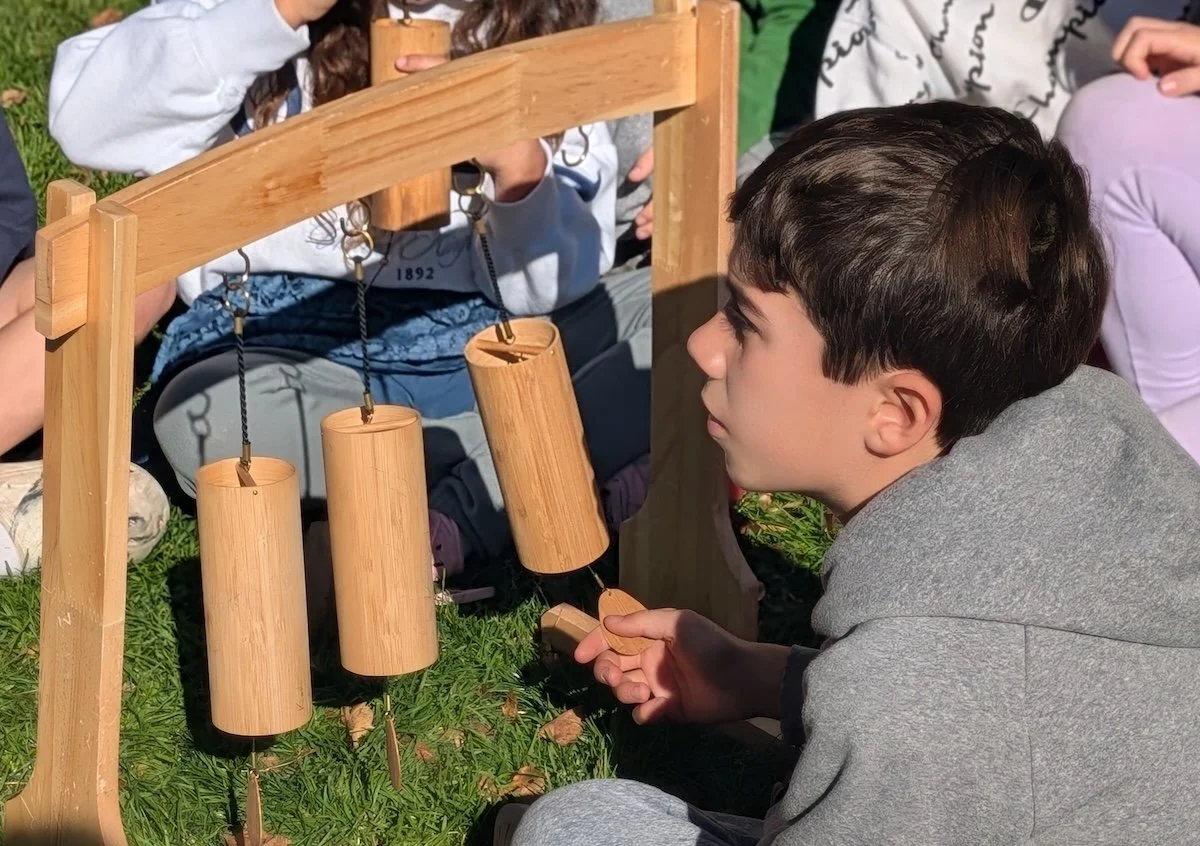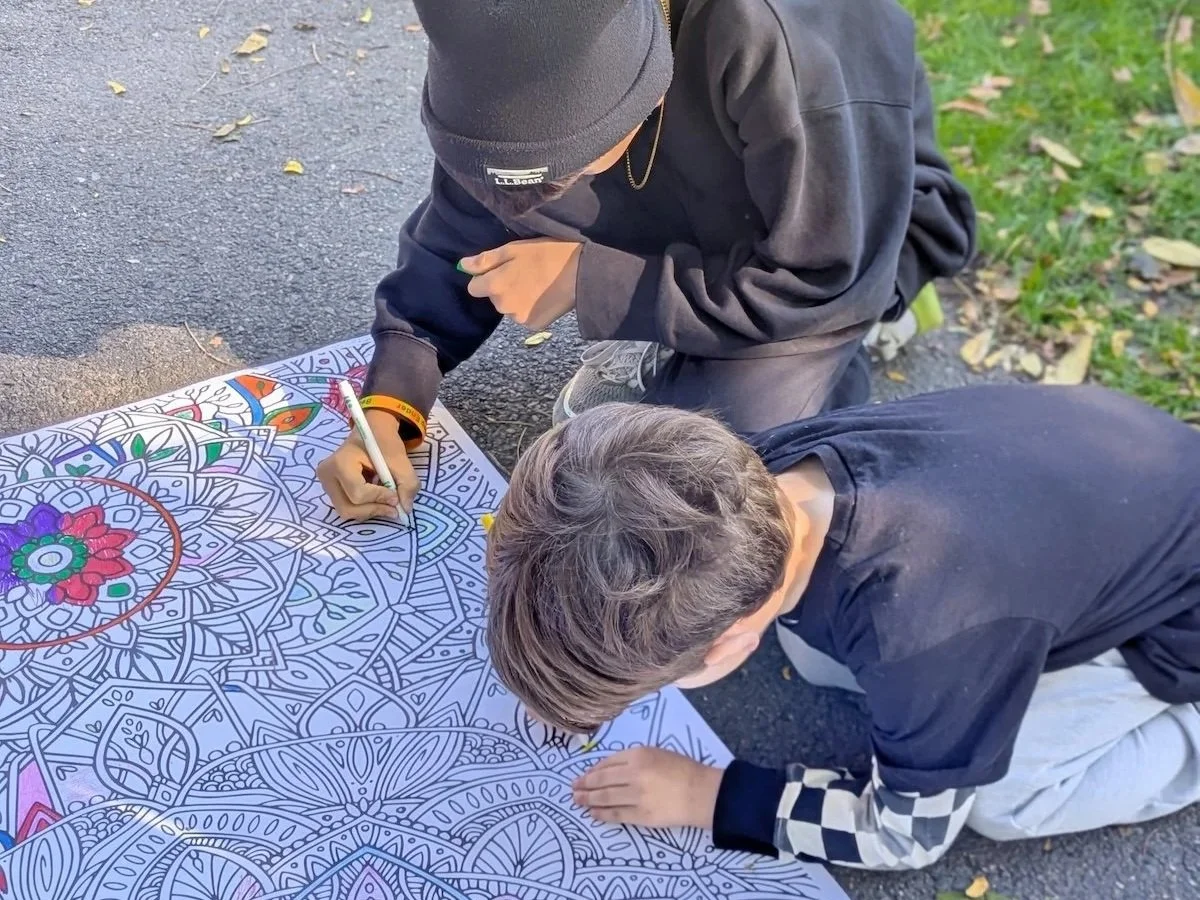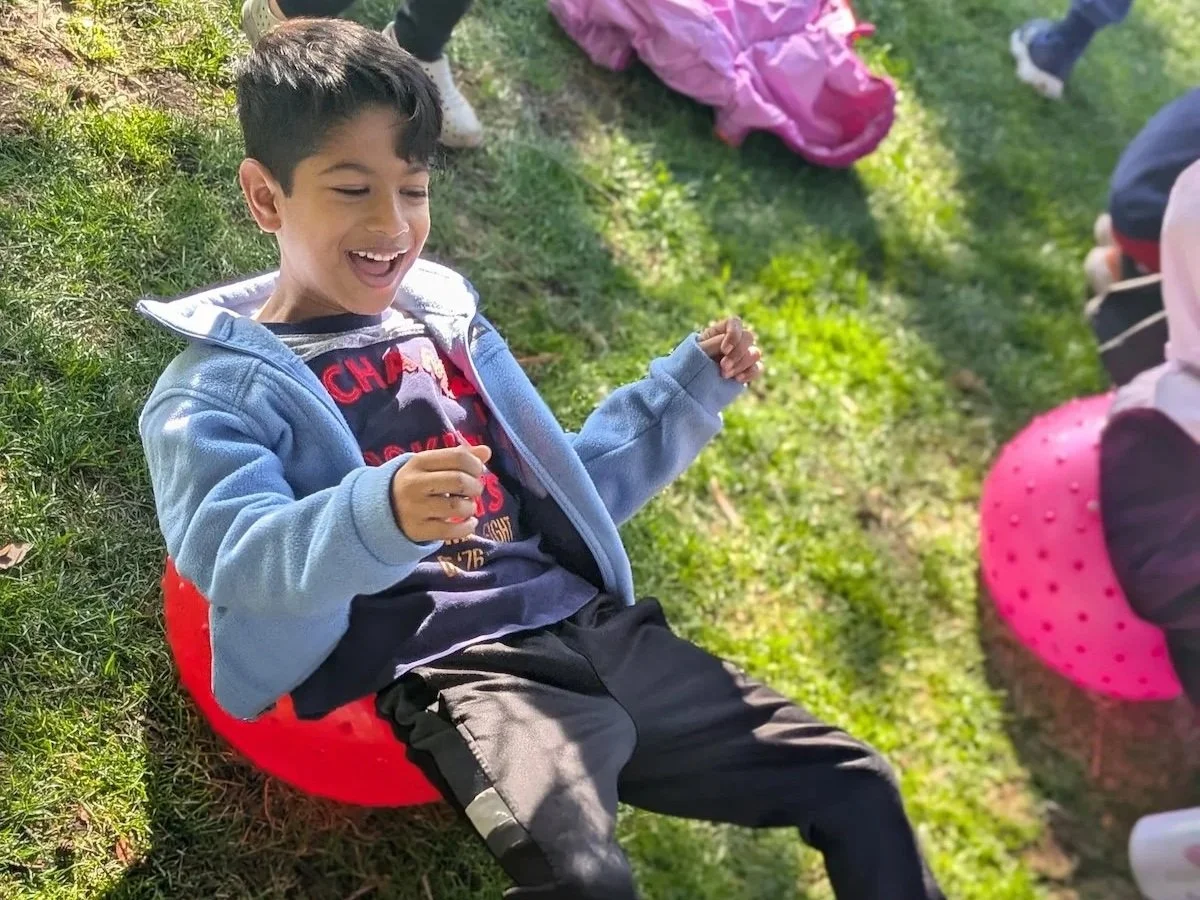The “Why” behind wellness
This post was written by The Advent School’s Yoga & Mindfulness Specialist Teacher, Marlene Boyette.
Advent’s annual Community Day of Wellness is a celebration of mindfulness, movement, and connection, where students, families, and community members engage with practices rooted in yoga philosophy.
Each station embodies key elements of wellness, giving students the opportunity to lead, share, and integrate what they have learned through years of yoga and mindfulness practice at The Advent School.
This event also reinforces student leadership, community engagement, the use of public city space as a classroom, and the yogic principles of connection, service (seva), and awareness.
1. Bubble Station - Joy and Breath Awareness (Pranayama)
Purpose: The Bubble Station invites participants to reconnect with joy through play while naturally practicing controlled breathing. As students blow bubbles, they take deep, mindful breaths - inhaling slowly and exhaling fully to create and release the bubbles.
Connection to Wellness and Yoga: This activity mirrors the yogic practice of pranayama, or breath regulation, which helps calm the nervous system and bring awareness to the present moment. It demonstrates that mindfulness can exist in simple, playful acts. The station supports emotional regulation, grounding, and joy - essential components of holistic wellness.
2. Sound Meditation Station - Focus, Relaxation, and Leadership
Purpose: This station offers an opportunity for students and guests to relax and center themselves through sound. Participants are guided by upper grade student leaders who facilitate the experience using instruments such as singing bowls, chimes, or gentle percussive sounds.
Connection to Wellness and Yoga: Sound meditation supports dharana (focus) and dhyana (meditation), both limbs of yoga that encourage deep concentration and awareness.
Vibrations from sound promote calmness, balance, and self-regulation. For fifth and sixth graders, facilitating this station fosters leadership, confidence, and the embodiment of mindfulness in community.
3. Mandala Coloring Station - Focused Attention and Mindful Art
Purpose: At this station, participants engage in mindful coloring using mandala designs. The act of coloring requires attention to detail and patience, encouraging stillness and creative focus.
Connection to Wellness and Yoga: Mandala art has ancient roots in contemplative traditions. In yoga, this aligns with dharana - the practice of single pointed concentration. As students color, they cultivate presence, self expression, and inner peace - learning that mindfulness can be practiced through art and creativity. This meditative activity also supports emotional regulation and sensory calm.
4. Affirmation Station - Positive Self-Talk and Compassion
Purpose: The Affirmation Station encourages participants to practice kindness through words- either by selecting or writing affirmations for themselves or by offering affirmations to others. This station promotes healthy self esteem, empathy, and self identity.
Connection to Wellness and Yoga: The practice reflects the yogic principles of ahimsa (non-harming) and satya (truthfulness), teaching students that their words hold power. Speaking or writing affirmations nurtures a positive internal dialogue, emotional wellness, and collective care. Students learn that affirmations are a way of embodying self-love and kindness within community.
5. Relaxation Station - Self-Soothing and Body Awareness
Purpose: This station provides a safe, calming space where students can explore self-soothing techniques using large proprioceptive balls. Participants gently roll on or across the balls, learning to notice how their bodies feel and respond to movement and pressure.
Connection to Wellness and Yoga: This experience mirrors the principles of savasana (rest and integration) and pratyahara (turning inward). Proprioceptive input helps students regulate their nervous systems and reconnect with their physical sensations. The Relaxation Station supports self awareness, grounding, and embodiment - helping children understand that stillness and rest are vital parts of wellness.
Each station is intentionally designed to empower fifth and sixth graders as leaders, mentors, and facilitators. Many of these students have practiced yoga and mindfulness at The Advent School since preschool, making this event a culmination of years of learning, practice, and growth.
By guiding younger students and community members, they embody the principles of service (seva) and community care, demonstrating how wellness extends beyond the classroom into shared, lived experience.






